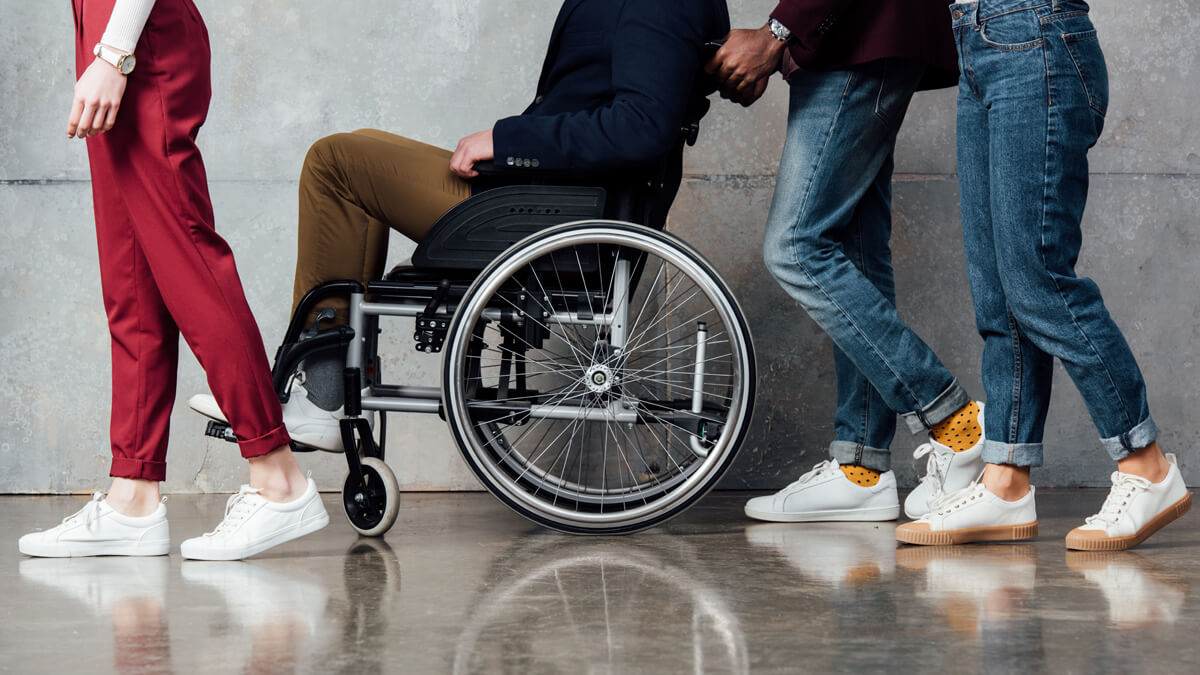Research shows that the average wheelchair-bound individual spends approximately 9 hours per day in a wheelchair. That’s a significant amount of time.
That moves your wheelchair out of the “mobility aid” department – and into the “extension of yourself” department. Because with that amount of time spent in a wheelchair, it really just isn’t a thing, is it? It could in truth be considered an extension of your own physicality. Impacting your self-confidence, self-worth, and independence.
It follows, therefore, that you would and should want to look after your chair. Ensuring that it lasts, is comfortable, safe and reliable.
As with many things, constant maintenance is key. In fact, looking after your chair is akin to looking after you. Not only to increasing the longevity of your investment – but also thereby reducing the risk of future problems, that could result in costly repair bills.
Like our bodies, however, certain parts of the wheelchair are more vulnerable to damage and/or more subject to wear and tear than others.
Here are a few tips on how to best maintain your wheelchair.
1. Dust
- The simple fact is, most surfaces are dirty. This dust and dirt gather on your wheelchair, whether in use or not. It is therefore recommended that you dust off your chair with a damp cloth on a daily basis, preventing the build-up of dust and grime that exasperates the normal wear and tear.
- It’s best to use a soft cloth on the metal components and seat, and a regular dishcloth on the wheels.
- You can wash the upholstery with soapy water at least once a month, using a mild detergent for stains.
- This up close and personal inspection also gives you the perfect opportunity to inspect a few other vital signs. Check for cracks or breaks in the frame, the health of your moving parts – and the tightness of your screws and bolts.
- The screws and bolts should be checked on a monthly basis. Constant usage, especially over uneven terrain, can cause these parts to unscrew.
2. Check tyres for wear and tear.
- Keep an eye on your wheels, especially if you regularly traverse rough or uneven surfaces. You need to make a mental note to self, to weekly check your tires and tyre pressure, to ensure they are not worn, split, deflated or punctured.
- Tyre pressure should actually be checked daily. Low-pressure tyres mean the rest of your body has to compensate, as you physically bear the burden of the strain of moving your chair forward. High-pressure tyres are subject to bursting or uneven wear. When you buy your chair, be sure to ask about the ideal tyre pressure according to your weight. That tyre pressure can then be maintained with a simple bicycle pressure gauge and pump.
3. Keep moving parts lubricated.
- Lubrication is key to ease of use and longevity of your chair. A wheelchair is designed for movement. That means moving parts need to be lubricated. You should regularly grease the axle of your wheels. And apply an all-purpose silicone lubricant spray to all your moving parts, ensuring the swivel, pivot and fold freely.
4. Look after your breaks
- Unreliable breaks result in injury. It’s that simple. Bear in mind, break efficiency is affected by incorrect wheel alignment, low tyre pressure and weather conditions.
- It’s likely you will pick up on any possible issues through daily use, but still, it is recommended you intentionally check your brakes on a weekly basis for any wear and tear – and have them replaced if you notice any problems. It’s imperative your brakes are maintained in optimal working condition.
5. Upholstery maintenance
Everything wears with useage. Over time, cracks or tears can appear where the fabric folds. This needs to be checked and maintained. Your chair (or seat cushion) must supply the padding and support you need. Poor support, discomfort or padding can result in pressure sores.
CHECKLIST SUMMARY:
DAILY CHECKS
- Dust off your chair with a damp cloth on a daily basis.
- Check for cracks or breaks in the frame, the health of your moving parts – and the tightness of your screws and bolts while you are doing your daily, up close and personal dust off and wipe down.
- Check tyre pressure
WEEKLY CHECKS:
- Check your tires and tyre pressure, to ensure they are not worn, split, deflated or punctured.
- Check your brakes for wear and tear.
MONTHLY CHECKS:
- Clean the upholstery, the backrest and cushion using soapy water at least once a month, using a mild detergent for stains.
- Check the condition of the brakes, the backrest and all moving parts.
- Check the screws and bolts are all tight
EVERY 2 MONTHS:
- Grease the axle of your wheels.
- Apply an all-purpose silicone lubricant spray to all your moving parts, ensuring the swivel, pivot and fold freely.
EVERY 3-4 MONTHS:
- Undertake a closer inspection of the quick release mechanisms, the anti-tip system, the footrest and upholstery.
ANNUAL:

